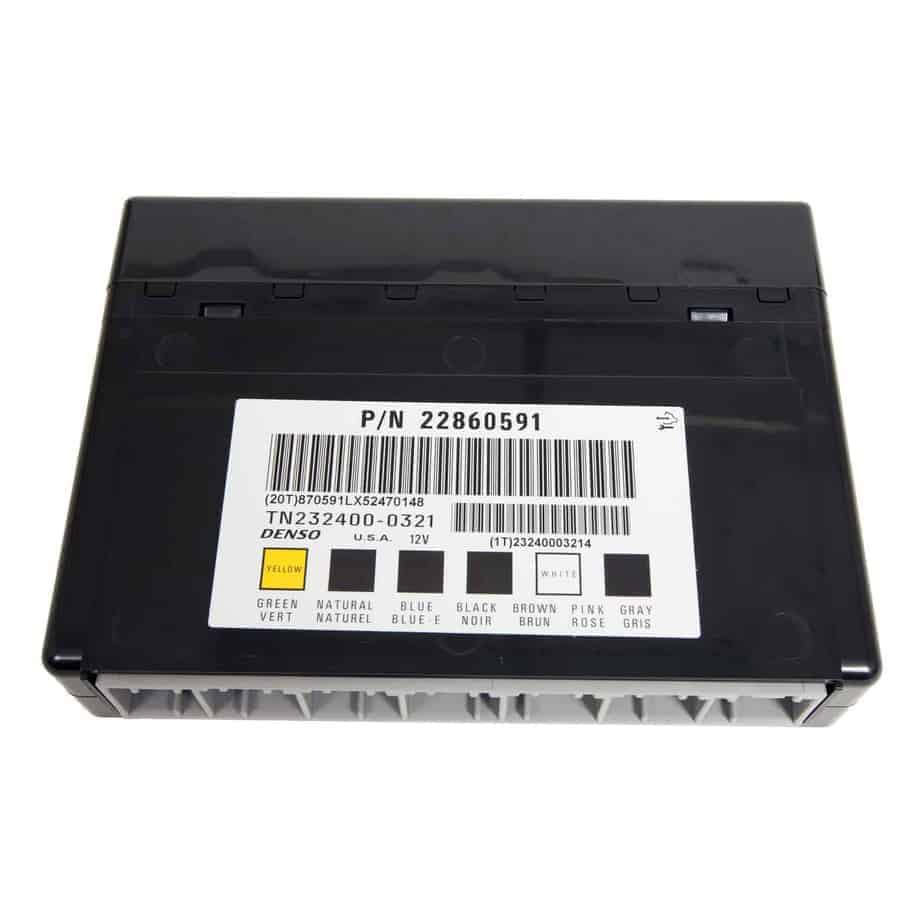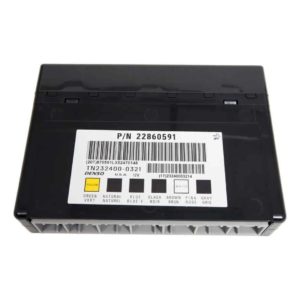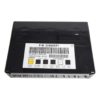Restore Your Traverse’s Electrical Functions with a VIN-Programmed BCM
Are you dealing with baffling electrical problems in your 2009-2012 Chevrolet Traverse? Flickering lights, a dead battery overnight, power windows with a mind of their own, or a security system that prevents your SUV from starting are all classic signs of a failing Body Control Module (BCM). As the central hub for your vehicle’s body electronics, a faulty BCM can cause a cascade of frustrating and hard-to-diagnose issues. Stop chasing electrical gremlins and get a definitive solution. This BCM is the reliable fix you need, arriving at your door pre-programmed to your vehicle’s specific VIN.
A Technician’s Notebook: The Traverse with a Mind of Its Own
A customer brought in their 2011 Traverse last month with a list of complaints that seemed unrelated. The radio would turn on and off, the driver’s side window wouldn’t go down, and occasionally, the vehicle wouldn’t start, showing only a ‘Service Theft System’ message. They had already replaced the battery and checked the alternator. After hooking up my scan tool, I noticed several communication loss codes with various modules. In my 20+ years of experience, this pattern almost always points back to the BCM. It’s the traffic cop for all these systems, and when it fails, chaos ensues. We installed a VIN-programmed BCM, and every single issue was resolved instantly. This is a common failure, and a correctly programmed module is the only proper fix.
Why Choose a VIN-Programmed Module?
The biggest hurdle in replacing a BCM is the need for expensive, dealer-specific programming. Our service eliminates that step entirely. By providing us with your VIN during checkout, you receive a 2009-2012 Traverse BCM that is truly plug-and-play. We flash it with the latest GM software updates, ensuring it communicates perfectly with your vehicle’s existing systems right out of the box. This saves you hundreds of dollars in dealership fees and days of vehicle downtime.
Common Signs Your Traverse’s BCM is Failing
- ✔ Intermittent or non-functional power windows, locks, or mirrors.
- ✔ Interior dome lights or dashboard lights staying on or not working at all.
- ✔ The security or anti-theft system activating randomly, causing a no-start condition.
- ✔ Erratic behavior from the radio, climate control, or windshield wipers.
- ✔ A battery that drains overnight for no apparent reason (parasitic draw).
- ✔ Multiple unrelated warning lights appearing on the instrument cluster.
Your Straightforward Installation Guide
Replacing the BCM in your Traverse is a manageable job for a confident DIYer. The BCM is typically located on the left-hand (driver’s) side of the dash. While this guide provides a general overview, always consult a vehicle-specific repair manual for detailed instructions.
- Safety First: Disconnect the negative terminal from your vehicle’s battery and wait a few minutes to ensure all systems are powered down.
- Locate the BCM: On the 2009-2012 Traverse, you’ll typically find the BCM under the driver’s side of the dashboard, often near the steering column. You may need to remove a lower dash panel for access.
- Disconnect and Remove: Carefully unplug the electrical connectors from the old BCM. They have locking tabs that need to be depressed. Once disconnected, unbolt or unclip the module from its mounting bracket.
- Install the New BCM: Mount your new, pre-programmed BCM in the same location and securely reconnect all electrical connectors. Ensure they click into place.
- Critical Post-Installation Steps: Reconnect the battery. After installation, two procedures may be required using a professional scan tool: perform the ‘Setup SDM Primary Key in BCM’ to ensure the airbag system communicates correctly, and a ‘Brake Pedal Position Sensor Calibration’ to ensure proper brake light and stability control function. If you are not equipped to perform these, a local repair shop can complete them for you.
Guaranteed Fitment for Your Vehicle
This Body Control Module is a direct replacement for part number 20921436 and is compatible with a wide range of GM vehicles. It will be programmed specifically for your 2009-2012 Chevrolet Traverse. This part also interchanges with the following part numbers:
10382479, 15093910, 15276271, 15299986, 15819552, 15828601, 15837419, 15872388, 15872421, 15880684, 15921352, 15921353, 15948438, 15948439, 20815898, 20839063, 20864767, 20864768, 20921435, 20935349, 22860591, 25826124, 25826125, 25847588, 25847589, 25892622, 25910474, 25934762, 25934763, 95151084.
While this part fits many models, this listing guarantees VIN-programmed compatibility for:
… and many other GM models including Acadia, Enclave, Impala, Equinox, Tahoe, Yukon, and Express/Savana vans. Please verify your part number for an exact match.
Frequently Asked Questions
Do I need to do any programming after I receive this BCM?
No. We program the module to your vehicle’s VIN before shipping. It arrives ready for installation. However, post-installation procedures like an airbag key setup or brake sensor calibration may be needed with a scan tool for full system integration.
Where do I find my VIN and how do I send it to you?
Your 17-digit VIN is located on the driver’s side dashboard (visible through the windshield) or on the driver’s side door jamb sticker. After you complete your purchase, you will receive instructions on how to provide us with your VIN.
Will this fix my ‘Service Theft System’ light and no-start problem?
A faulty BCM is a very common cause of these specific issues on GM vehicles. While we cannot guarantee a diagnosis without seeing the vehicle, replacing the BCM with our pre-programmed unit is a highly effective solution for this problem.
Is this a difficult part to replace myself?
For someone with moderate mechanical skill, it is a straightforward replacement. The main challenge is typically accessing the module under the dashboard. The key benefit of our product is that the difficult programming part is already done for you.
What happens if I install it and still have problems?
Our modules are thoroughly tested. If issues persist after installation, it could indicate another problem in the vehicle, such as a wiring fault or a failure in a different module. We recommend double-checking all connections and consulting a professional technician if needed.


